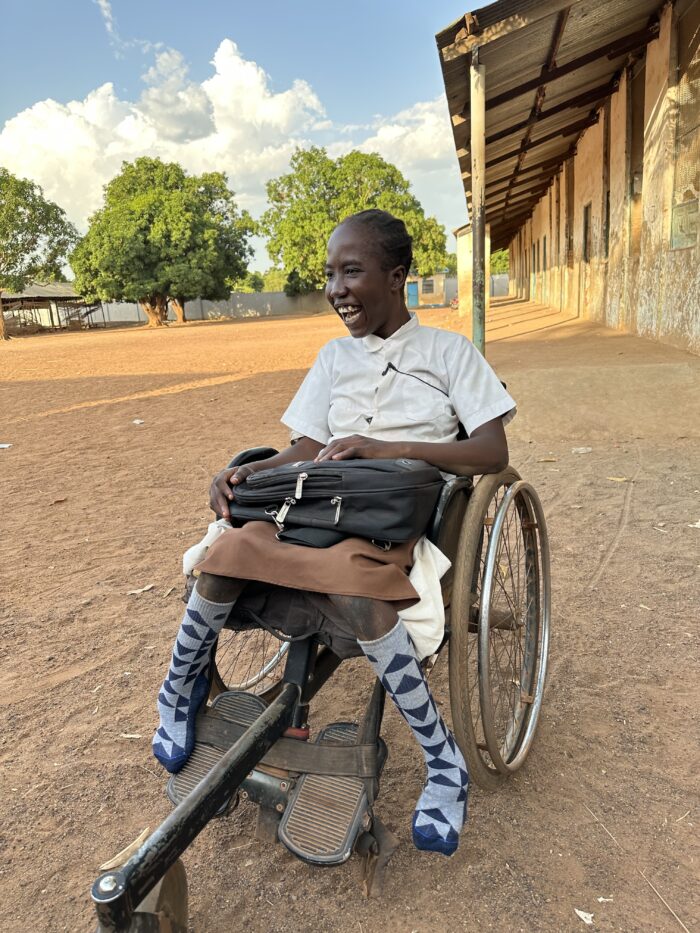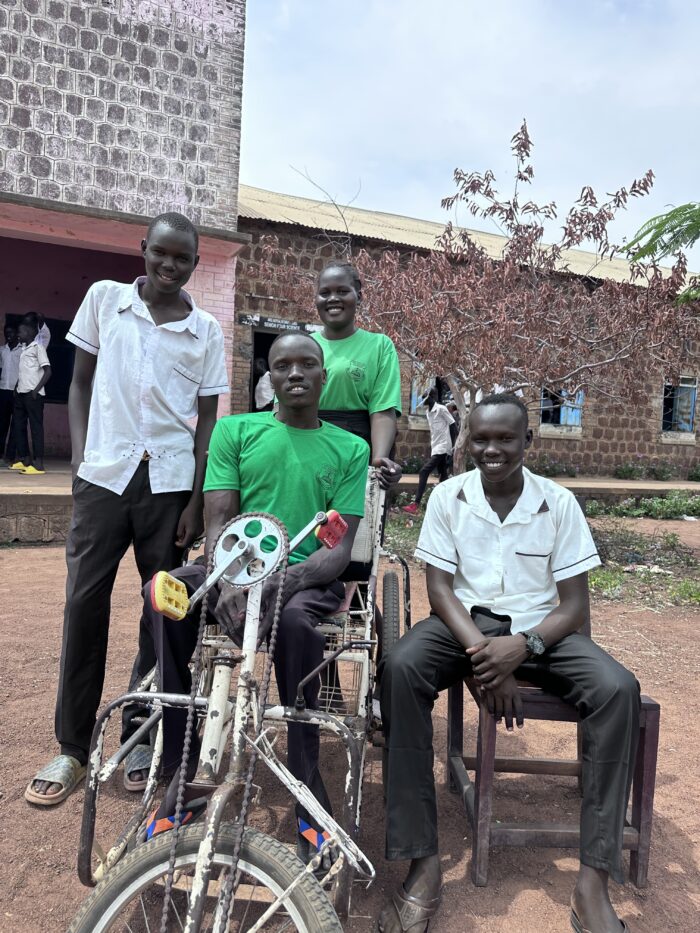How do we achieve Sustainable Development Goal Four for children with disability by 2030? The gains made in South Sudan and challenges still faced.
December 4, 2023 11:51 amThe Sustainable Development Goals are a set of 17 global goals adopted by the United Nations in 2015. You have probably heard of them. But what exactly are these goals? And how do they relate to disability?
Sustainable Development Goal 4: Quality Education, aims to ensure inclusive and equitable quality education and promote lifelong learning opportunities for all, including persons with disabilities.
This goal is especially important for the education of children and youth with disabilities, who often face additional barriers and discrimination in accessing and completing their education. According to the United Nations, children with disabilities are less likely to start school, more likely to drop out, and less likely to achieve minimum learning standards than their peers without disabilities. These are not particularly good odds, and unfortunately, in South Sudan, the odds are worse because of protracted conflict and poverty.
In South Sudan, large-scale budgetary allocations are necessary to ensure effective implementation of the National Inclusive Education Policy of 2021. These budgets will have to focus on addressing inaccessible infrastructure, provision of learning materials in accessible formats, training teachers to adapt their teaching methods, providing access to support services and assessment which would ensure that children have access to assistive devices. Even with increased financial input, huge advocacy efforts need to be taken to address negative attitudes and stigma that prevail in the capital, all the way down to the most remote areas of the country.

The Sustainable Development Goals recognize the right of persons with disabilities to education and call for the elimination of all forms of discrimination and exclusion in education. They also call for the provision of quality education that is inclusive, equitable, relevant, and effective for all learners, regardless of their abilities, backgrounds, or circumstances.
- In South Sudan this would mean that…
- Schools are welcoming and have zero tolerance towards bullying.
- There are teachers who are willing to adapt their teaching methods and lesson materials to accommodate all learners, also those who are slower and need content to be adapted or mediated through sign language.
- Boards of Governors must involve the community to make physical adaptations to the school building and terrain and link up with support services to ensure that children are provided with assistive devices.
- Equity means respecting the right of all children to have access to education and to level the playing fields so that they can develop their full potential.
- For many learners, access to vocational education would be more relevant, but also in that pathway, support and reasonable accommodation would be needed.
Some of the specific targets and indicators related to the education of children and youth with disabilities can be found here.

The education of children and youth with disabilities is not only a human right, but also a key driver of sustainable development. It can contribute to reducing poverty, improving health, enhancing social inclusion, promoting peace and security, and protecting the environment. Therefore, the SDGs call for the full participation and empowerment of persons with disabilities in the design, implementation and monitoring of education policies and programmes, as well as the collection and disaggregation of data by disability status to track progress and identify gaps.
Great progress has been made in capturing and monitoring the enrolment of learners with disabilities in South Sudan and establishing an Education Management Information System (EMIS) which records enrolment by using the Washington Group Questions.
However, the 31,000 learners currently enrolled in school and captured on the national EMIS, constitute less than 2% of the learner population and will have to radically improve to meet the goals of universal access by 2030. If the global estimate of disability prevalence of 15%[1] is applied to South Sudan, this would mean that funding should be earmarked to increase enrolment and retention for more than 140,000 children with disabilities who could currently be out of school. This is in line with the commitment of the recently released White Paper on International Development of the UK government to focus on the most marginalised girls, and children with disabilities. It would involve “working with partners to keep more girls and children with disabilities in school and improve their learning outcomes, and to reduce violence against girls, child marriage, early pregnancies, and long-term poverty”[2].

Let us use the International Day of Persons with Disabilities 2023 to celebrate the gains made in South Sudan but let us also shine a light on the many challenges still faced by persons with disabilities and provide them with a platform to have their voices heard!
[1] Rohwerder, B (2018) Disability in South Sudan, Institute for Development Studies. https://assets.publishing.service.gov.uk/media/5af96f2fe5274a25dbface4c/Disability_in_South_Sudan.pdf
[2] UK Government (2023) International development in a contested world: ending extreme poverty and tackling climate change: A White Paper on International Development https://assets.publishing.service.gov.uk/media/6560874b0c7ec8000d95bdcf/international-development-in-a-contested-world-ending-extreme-poverty-and-tackling-climate-change.pdf
Categorised in: Disability Inclusion, Human Interest Story
Comments are closed here.